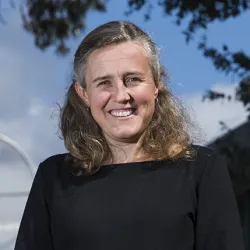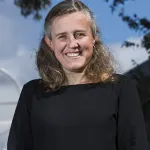
Master of Science in Astronomy & Astrophysics (Advanced option available)
Overview
Discover everything there is to know about extra-terrestrial planets, solar systems, galaxies, the universe and its history at some the world’s most advanced space facilities.
With the advent of the Australian Space Agency, there has never been a better time to master astronomy and astrophysics. At Australia's national university, you can develop your skills and knowledge through hands-on activities at world-class facilities including telescopes at Siding Spring Observatory and Mount Stromlo’s Advanced Instrumentation and Technology Centre.
You will learn from world-leading academics at the ANU Research School of Astronomy and Astrophysics. Your teachers also collaborate with industry to develop new space technology like nano-satellites and powerful lasers that can move space junk.
Advanced program
The Master of Science (Advanced) in Astronomy & Astrophysics program provides you with the opportunity to extend your practical and coursework experience with the development and implementation of a research project supervised by an academic. Previous research projects have involved collaboration with global institutes including Harvard, Princeton, UC Berkeley, Cal-Tech, MIT, Cambridge, Oxford, the Institute for Astronomy in Hawaii, and the Max Planck Institutes for Astronomy, Astrophysics, and Extraterrestrial Physics.
Commonwealth Supported Places (CSP) are available for the Advanced version of this program.
Key facts
- #1 in Australia for Physics and Astronomy (QS 2024)
- #1 in Australia for Physics and Astronomy (THE 2024)
- 2 years full time
- Semester 1 & 2 intake
- Access to state-of-the-art facilities
- Prior learning recognised
- #1 in Australia for graduate employability (Times Higher Education)
- Commonwealth Supported Places (CSP) are available for the Advanced version of this program
Testimonials

Sarah Leslie
“There’s a really friendly community atmosphere at Mount Stromlo. It’s really serene and quiet, so you get a lot of work done, but at the same time there are all these experts in all these different fields available to you. You can have really cool conversations, maybe even with a Nobel Prize winner!"

Melanie Kaasinen
"I have collaborated with researchers from Germany, the USA, France, and Japan and met many more from institutions all over the world. I was also able to travel to Hawaii to observe with the Keck II telescope, one of the world’s largest telescopes. These opportunities have enabled me to rapidly develop as a researcher."
Careers
Studying at the best university in Australia for astronomy and astrophysics (QS 2023) provides you with the opportunity to diversify your career options and make international connections. This program prepares you for data sciences roles in tech companies; roles with space and defence companies like Lockheed Martin, Northrup Grumman, and national space agencies; or for a range of roles in both the public and private sector.
Graduates from the advanced program have gone on to do PhD research in astronomy and astrophysics at some of the best institutions in Australia and overseas.
The Australian National University has been ranked as the top university for graduate employability in Australia in the Global University Employability Ranking 2023-24. As a student at ANU, you gain access to the ANU CareerHub – an online career development and employability tool that includes a jobs board and careers resources. You also have access to drop-in chats with a career consultant and to attend our career fairs to meet potential employers.
Learning experience
Fees & scholarships
Fees
Please visit the Programs and Courses website for information about fees.
View fees View fees for advanced programScholarships
Whether you are looking for financial support to start your studies at ANU or help to move away from home for the first time, we have scholarship opportunities for you and your situation.
Key people

Associate Professor Christian Wolf

Christian's research areas are in wide-field sky surveys, galaxy evolution, gravitational-wave events, and in particular the growth of supermassive black holes from the early Universe until today.

Professor Naomi McClure-Griffiths

Naomi works primarily on the evolution of the Milky Way and nearby galaxies. She is co-Principal Investigator on two of the large observational surveys underway with the Australian SKA Pathfinder (ASKAP): the Galactic ASKAP survey, GASKAP, and the Polarisation Survey of the Universe's Magnetism (POSSUM).

Associate Professor Yuan-Sen Ting

Yuan-Sen and his research group tackle the most challenging aspects of astrophysics in light of large data sets, drawing heavily on a combination of theoretical modeling, statistical inferences, and machine learning.
How to apply
Understand the how to apply steps
Visit the international postgraduate applications page to prepare for your application to ANU.
International postgraduate applicationsUnderstand the how to apply steps
Visit the domestic postgraduate applications page to prepare for your application to ANU.
Domestic postgraduate applications




